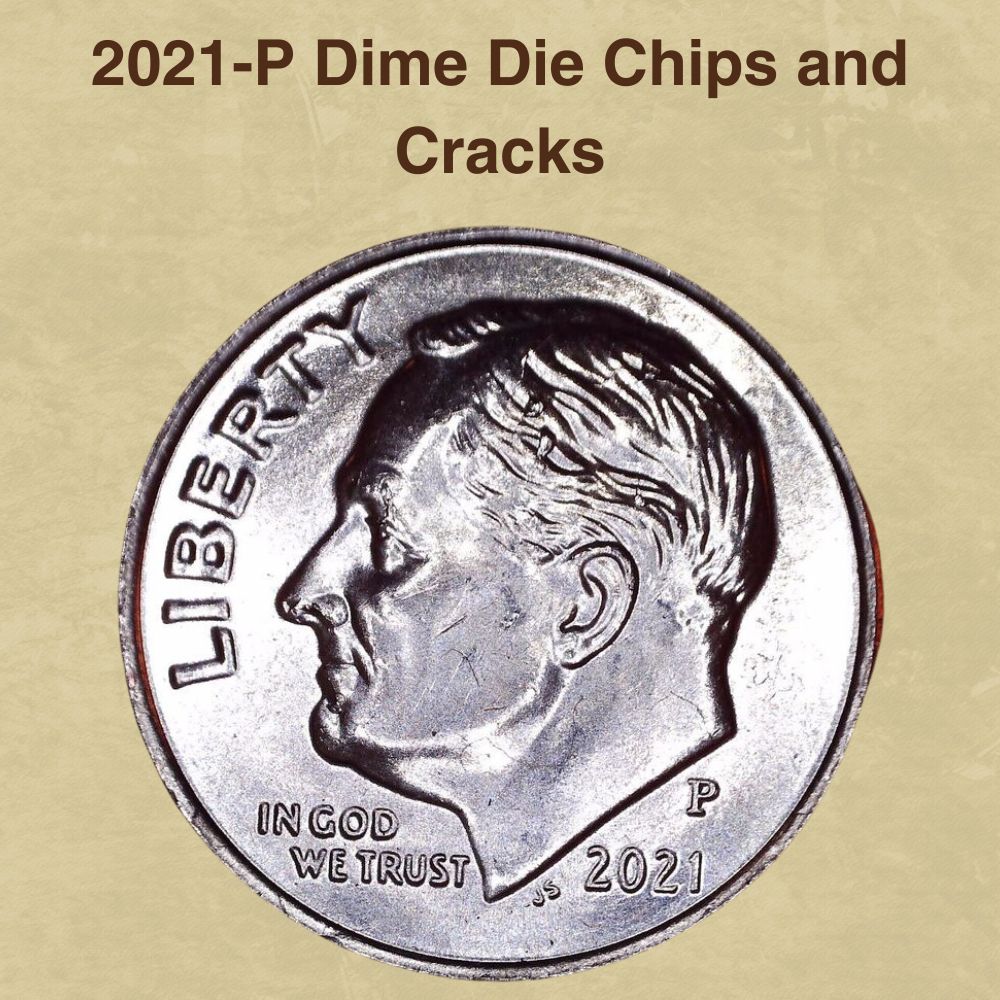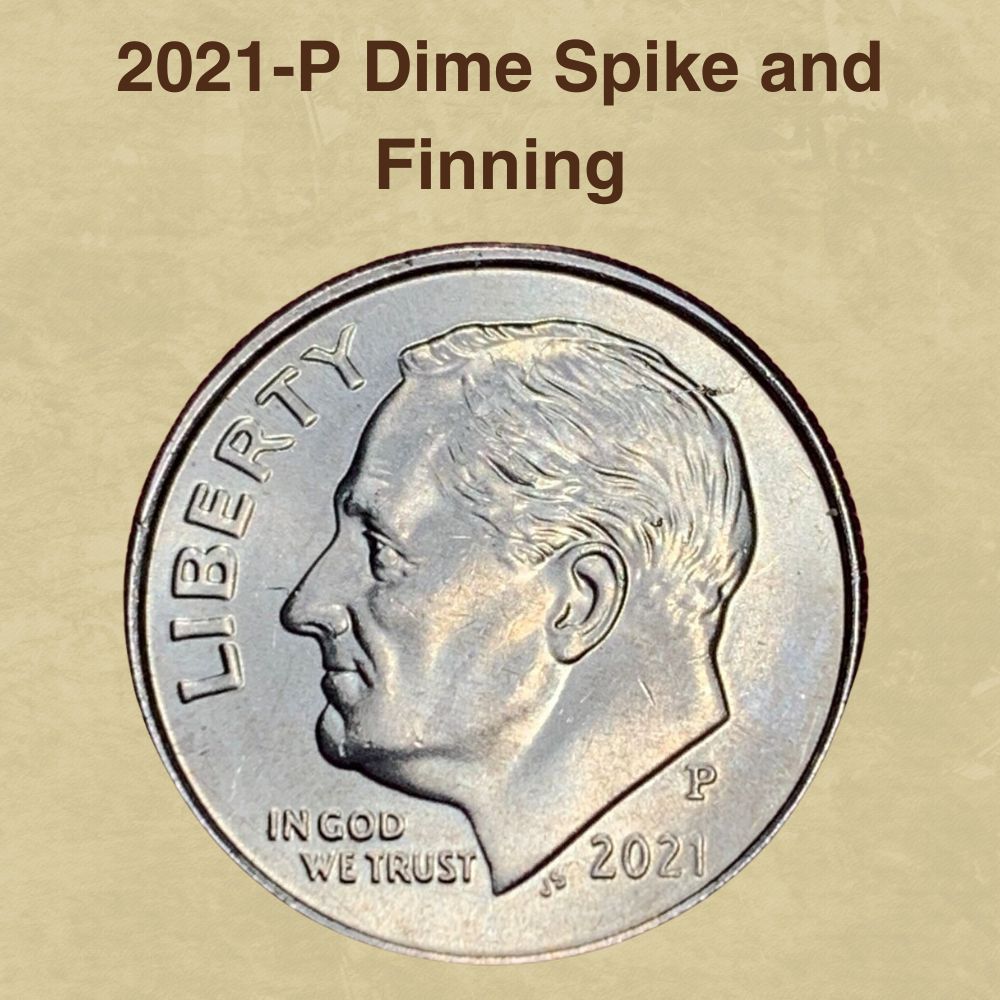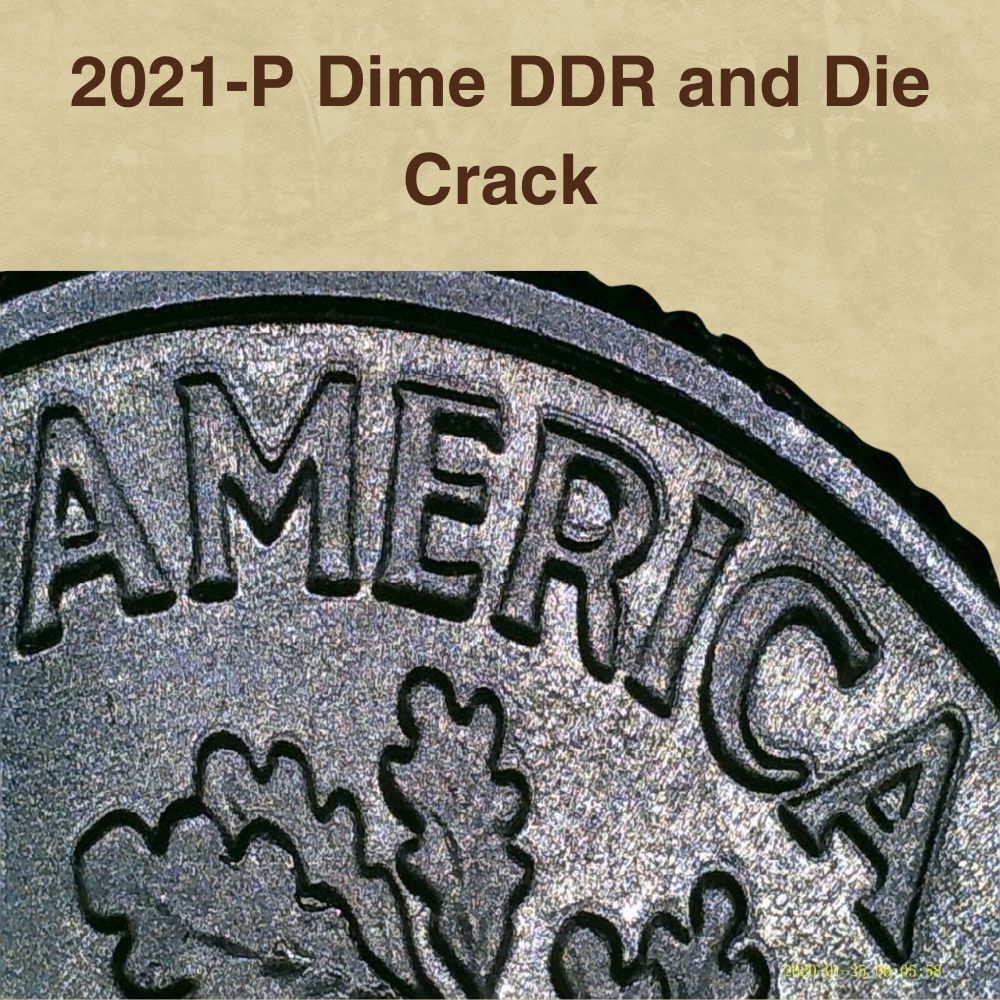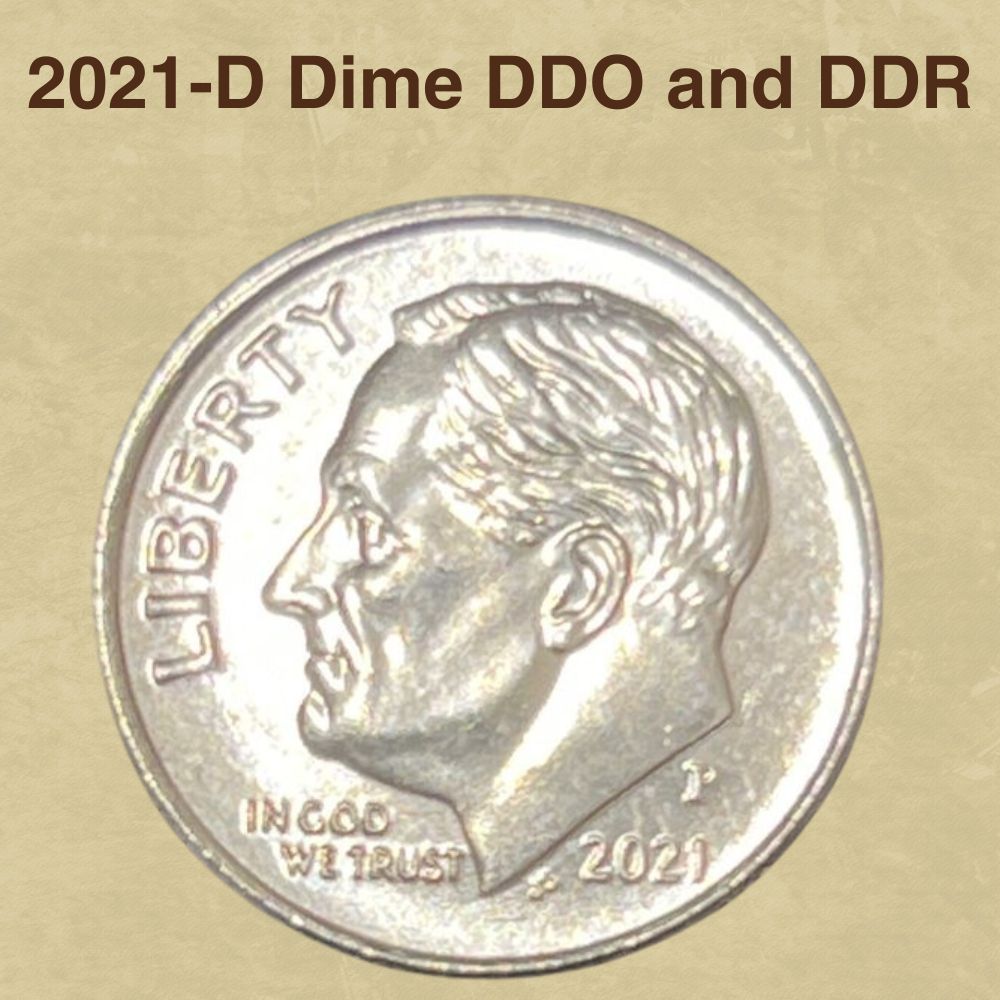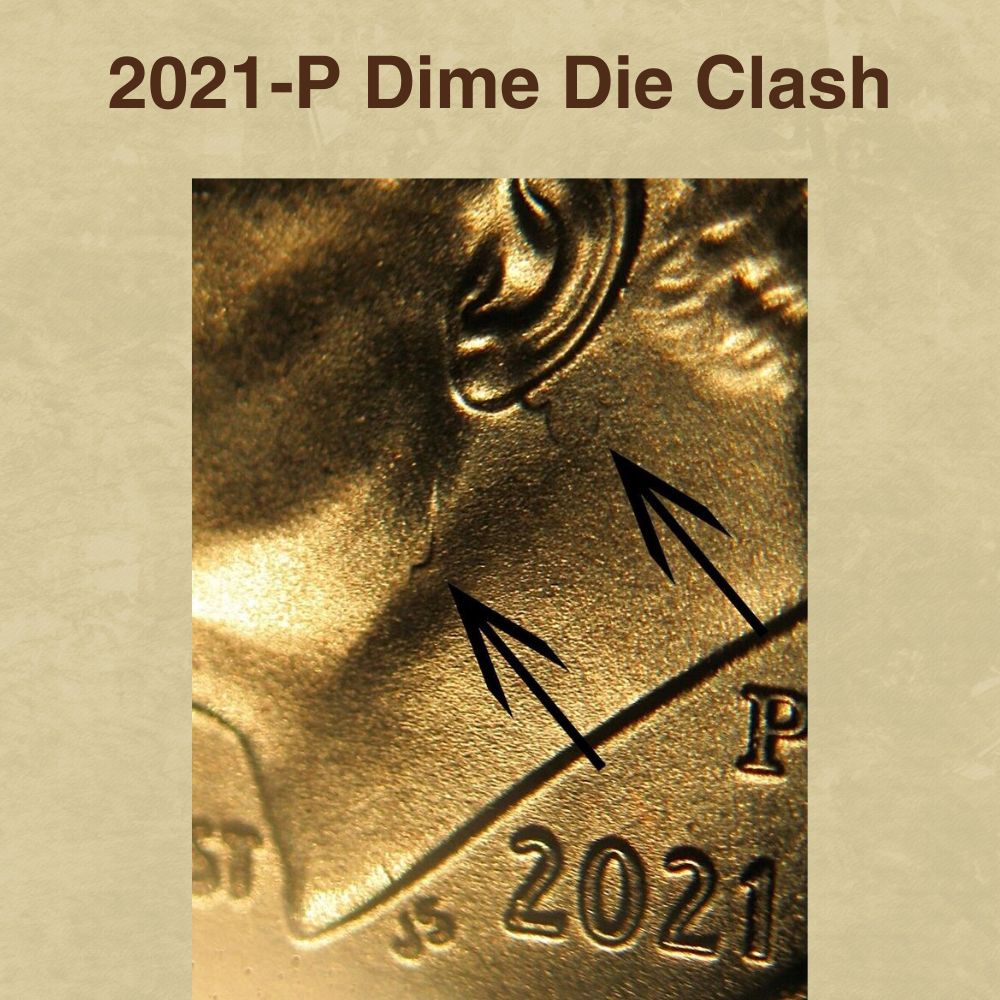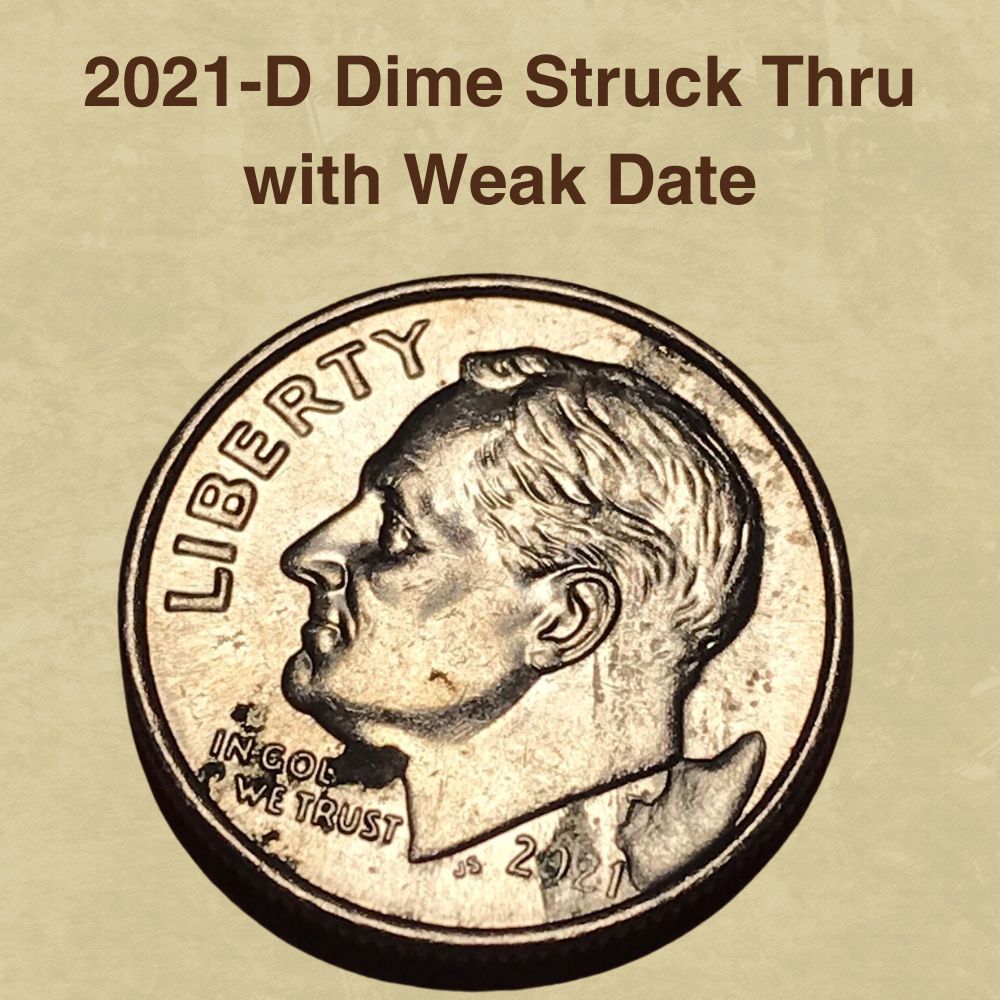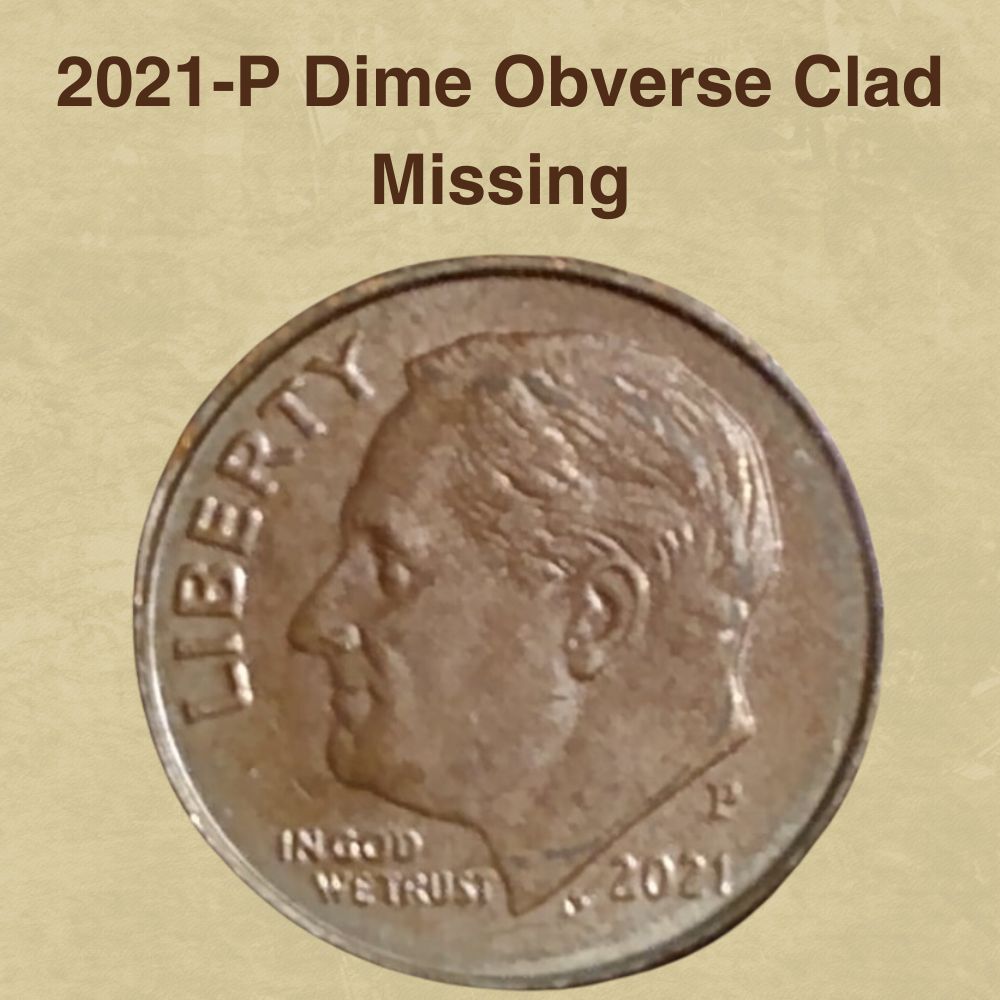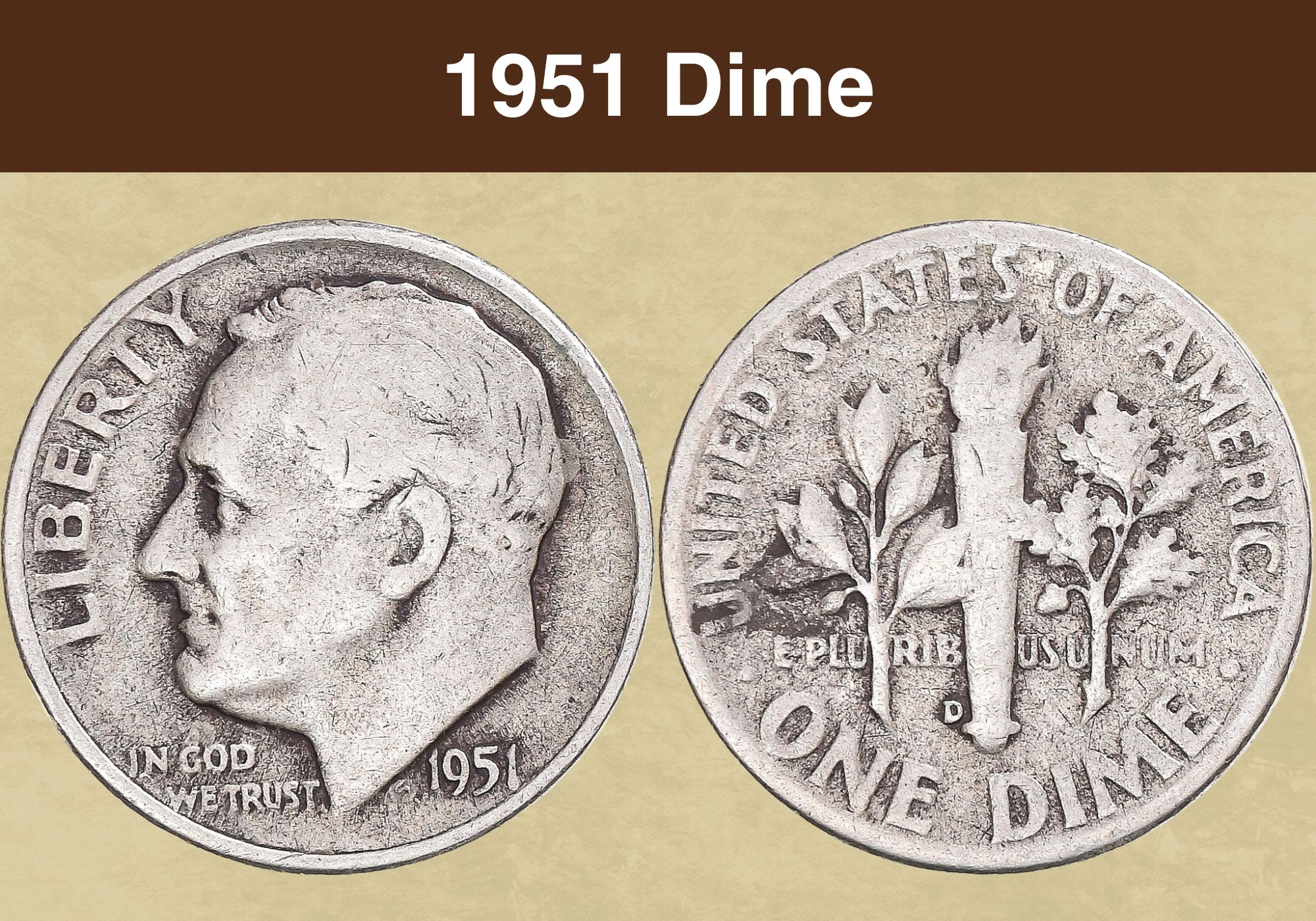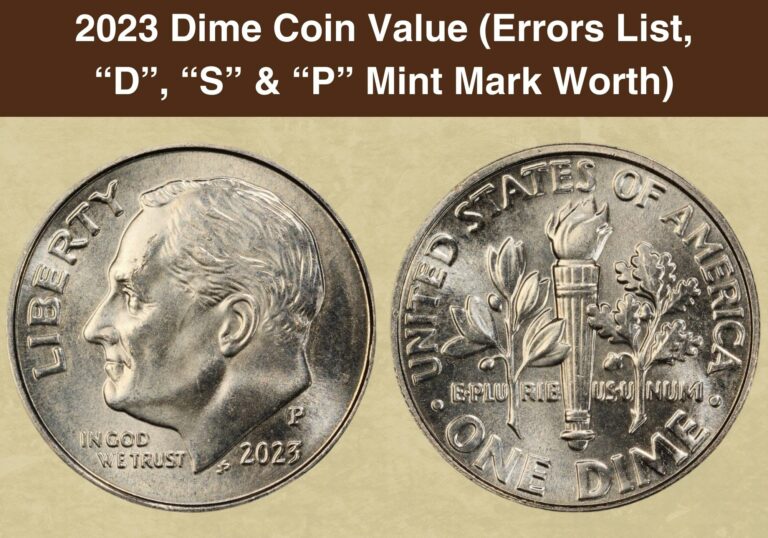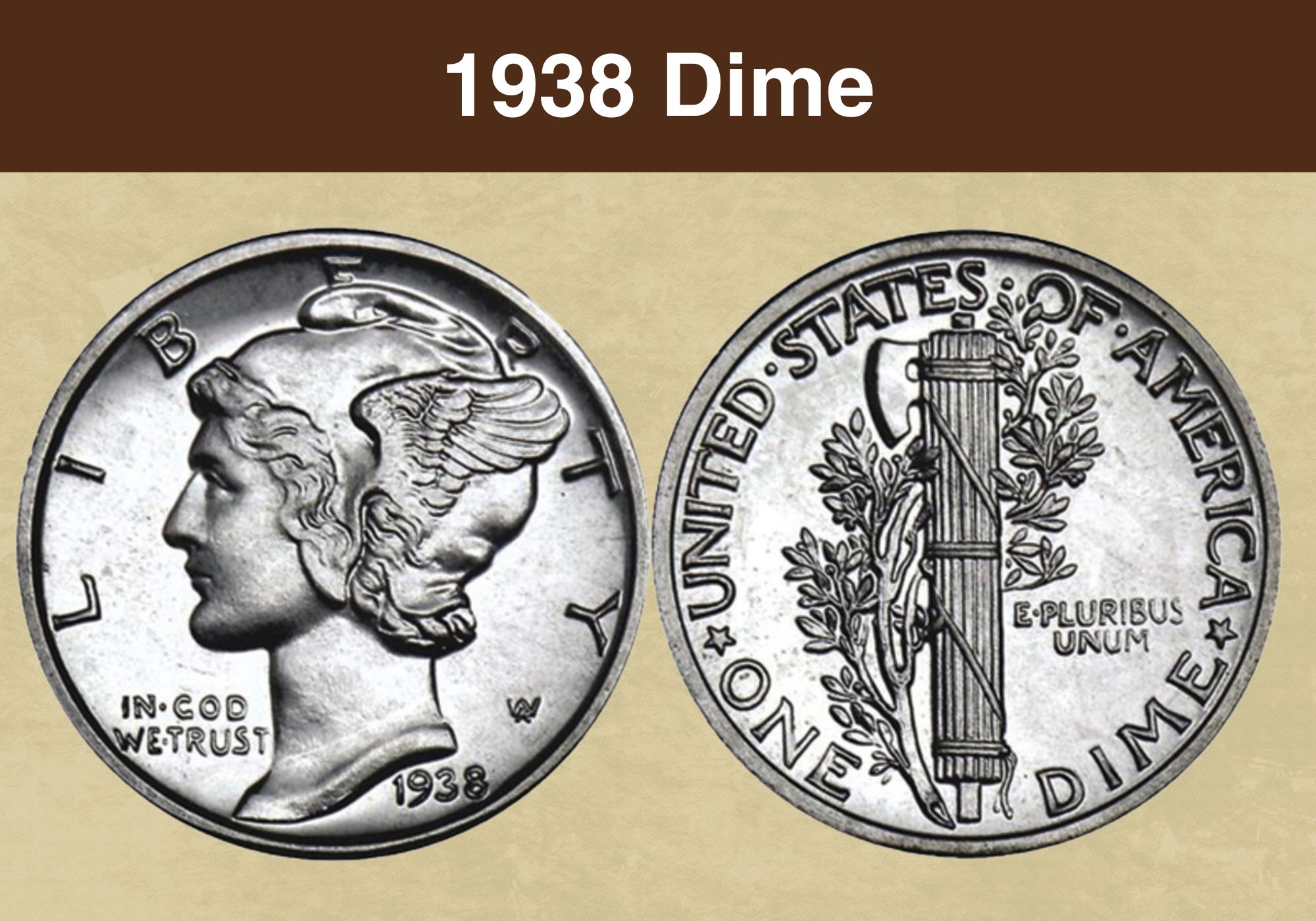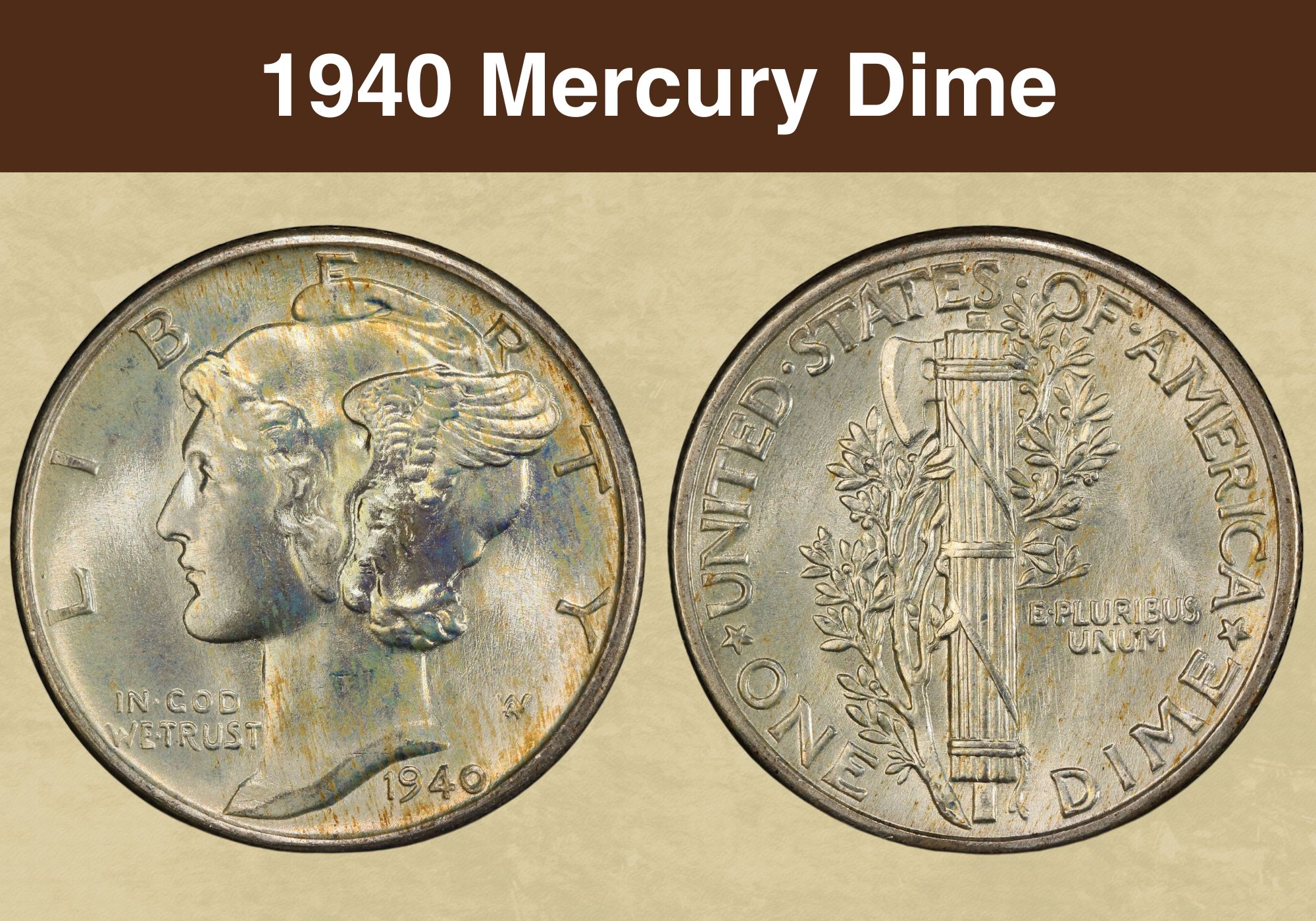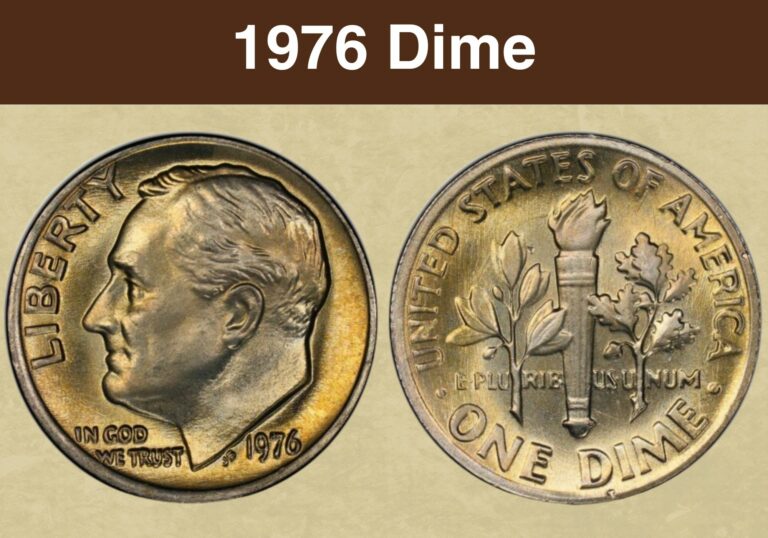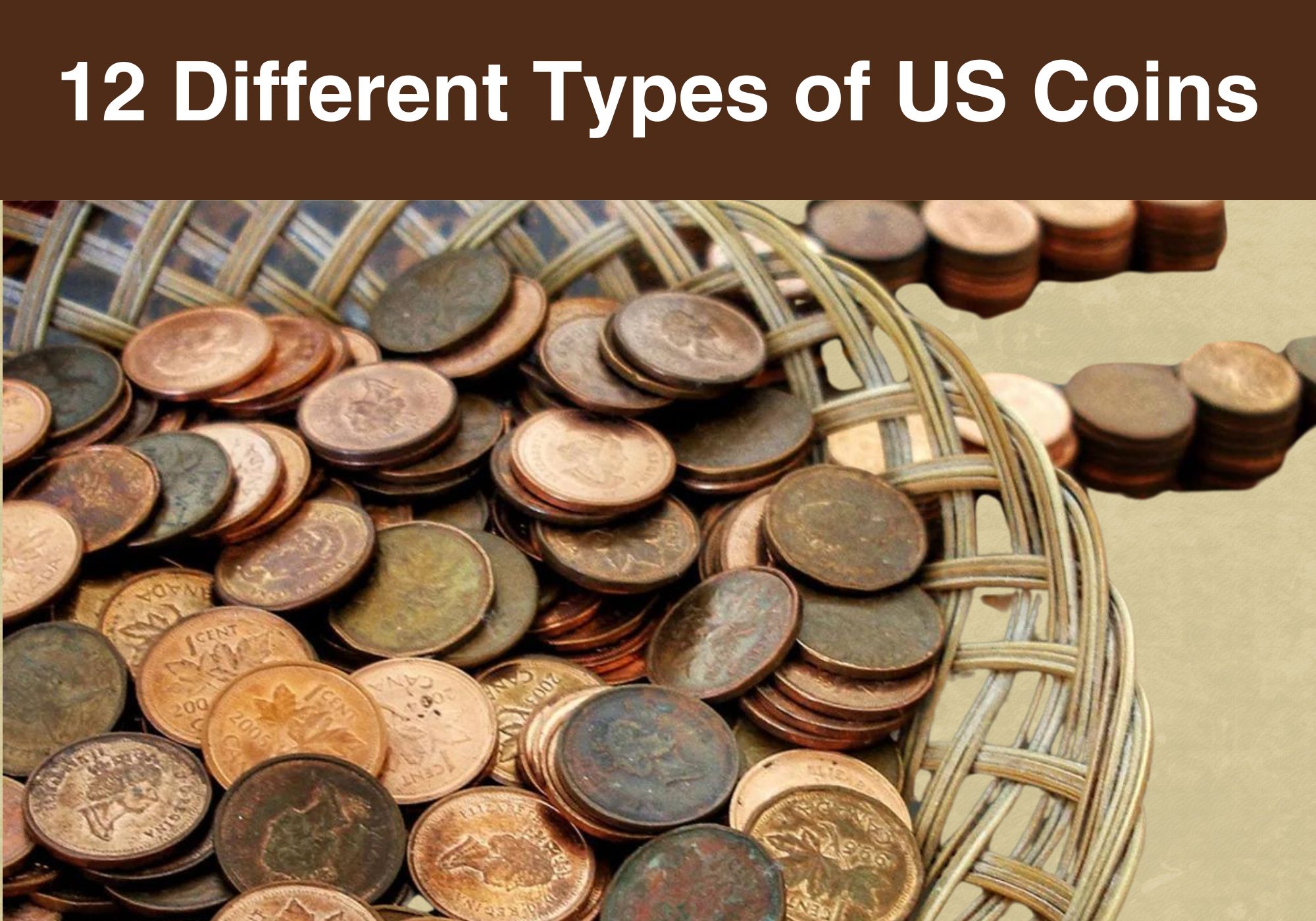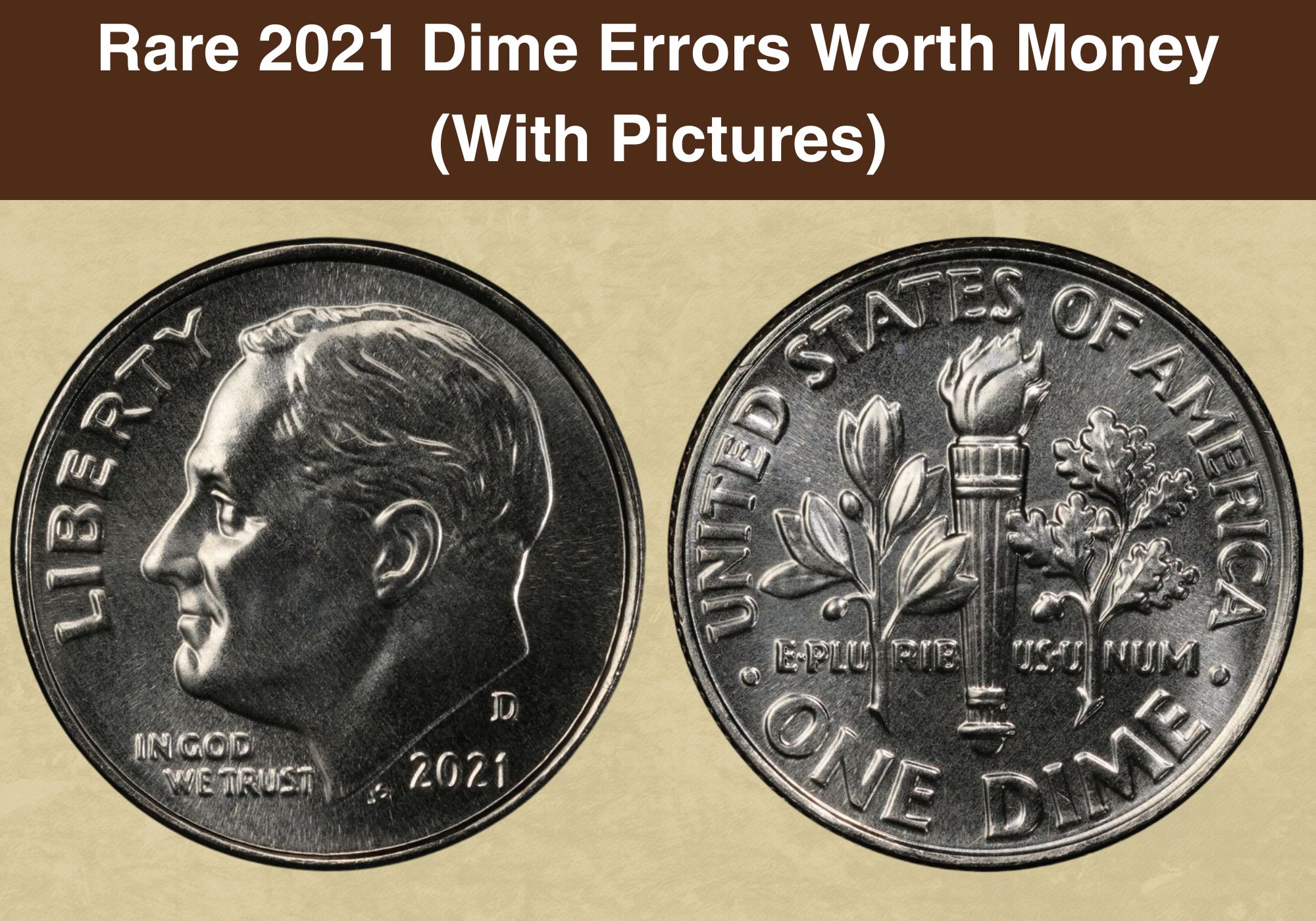
Coin Value Contents Table
- 1. 2021-P Dime Die Chips and Cracks
- 2. 2021-P Dime Rim Damage
- 3. 2021-P Dime Spike and Finning
- 4. 2021-P Dime DDR and Die Crack
- 5. 2021-D Dime DDO and DDR
- 6. 2021-P Dime Die Clash
- 7. 2021-P Dime Lamination Error
- 8. 2021-P Dime Strike Through
- 9. 2021-D Dime Struck Thru with Weak Date
- 10. 2021-D Dime with DDO, DDR, and Off-Center
- 11. 2021-P Dime Obverse Clad Missing
A dime is a 10c American coin and is one of the few that is still profitable because it only costs the mint 5c to make one. That’s a 50% seignorage on every piece! But in the world of numismatists, a dime can be worth so much more if it has mint mistakes. So let’s go through the 2021 Dime Errors List to note any important mint flaws and their resulting resale value.
1. 2021-P Dime Die Chips and Cracks
When the US Mint is making coins, the designer or engraver used to make an 8” Galvano that would be reduced to size. This would be used to create a steel hub which would in turn make steel dies. These dies would strike blank discs called planchets to produce coins. These days, the bulk of the process is computerized. First, a digital feed supplies the hubbing machine.
The master hub then strikes dies which later hit blanks. But as these dies get old and develop damage, their cracks, chips, and gashes get transferred to the coins they make. They’re called cud errors. An example is a 2021 Philadelphia Dime that has a scratch or graze in FDR’s hair. A few more of these obverse die chips (the heads side) appear over his eye, nose, and mouth.
2. 2021-P Dime Rim Damage
In ancient times, coins were carved by hand so it was hard to make them identical. But once machines were introduced to the mix, consistency improved. In the late 1600s, mints began to use milling machines to add a border to coins. Other options included detachable collars and incusion machines. They added a raised border, ridges called edge reeds, and/or writing.
These retaining collars ensured coins had the same amount of metal, width, and weight to ensure reliable face values. They also helped the coins to stack effectively. On this 2021 Dime, the damage is on the lower rim, next to the motto In God We Trust, and on the upper rim near Liberty. These mild bumps are visible under a jeweler’s loupe or coin microscope.
3. 2021-P Dime Spike and Finning
Lots of 2021-P Dimes have shown up with rim damage. It’s sometimes described as finning, which is when the outer section of the rim is visibly raised. It feels like a rough ledge at the end of the … edge, no pun intended. The mint error happens when the die strikes with too much pressure or hits the blank at an angle, forcing the already raised collar to push higher.
On this coin, you can see distinct finning on both the obverse and reverse of the coin so the blank was maybe misaligned by the feeder fingers. Apart from finning, this Philadelphia Dime also has some potential die crack damage. The error is in the form of a scratch that pokes out the back of FDR’s head. It looks like someone stuck a spike on his skull, hence the name.
4. 2021-P Dime DDR and Die Crack
You might remember screen printing or potato printing from your art class in elementary school. When you misshaped the potato design, a blob of paint would end up on the paper because the potato didn’t fully block the spot. The same principle applies to die cracks and chips. If some steel flakes off the die, the blank will develop smudges and glops at that spot.
On this 2021-P Dime, the messy mass of excess metal appears next to the torch. It takes the form of a teardrop above the DI in Dime. But this coin shows some doubling as well. These are rare on digitally struck coins because the hubbing process is fully computerized. But this isn’t a verified coin so the owner describes it as a DDR thanks to the shadowing effect on it.
5. 2021-D Dime DDO and DDR
Early on, coins would have to be struck two or more times to ensure the design was properly copied and that all coins looked the same. And the coining press had to be very carefully calibrated to make sure each strike landed on the exact same spot. But sometimes, the blank or planchet moves between strikes, causing mechanical doubling. Or it could happen prior.
During the hubbing stage – when steel hubs are used to make the dies that will later produce coins – the die itself might shift position. This means the second or third strike lands slightly to the right or left. This doubling effect is then reproduced on every coin that die makes. And this Denver Dime had die doubling on both the front or obverse (DDO) and the back (DDR).
6. 2021-P Dime Die Clash
As we’ve just explained, timing is really important when you’re striking coins. It’s especially crucial during the ‘conveyor belt’ portions of the minting process e.g. when the feeder fingers push planchets into position between the dies. If the feeder fingers are too slow, the blank may be struck again as it exits the coin press. This results in multi-strike or off-center errors.
But if the feeder fingers are too fast, the blank may pass through the press unmarked. This forces the obverse (heads) and reverse (tails) die to hit each other. The pressure might make some of the back design details appear on the front die, and these will then be copied to the next blank. For example, you might see torch traces of FDR’s face. This is called a die clash.
7. 2021-P Dime Lamination Error
You may know that most American coins have a copper core with cupronickel cladding. The planchets come in 1,500 feet of coiled sheets that are fed into the blanking machine to be straightened and cut into discs. But sometimes, the blanks are defectively alloyed so when a die hits the planchet at high pressure, the clad layer cracks, slips, or peels off to show copper.
Other times, the clad layer gets flaky but doesn’t expose the core below. This is known as a lamination error, though it may also be mistaken for a die break. Sending your coin to a verification company is the only way to be sure. But even on ungraded coins, dramatic errors like a gash across FDR’s head can be valuable, and this spike runs from the rim to his temple.
8. 2021-P Dime Strike Through
Numismatists are people who study, trade and collect coins, medals, tokens, paper money, and things like that. And they use certain jargon within the industry. We’ve looked at some of these technical terms already e.g. obverse for the front or heads die, reverse for the tails side, and rim for the raised border. If you come into their space unprepared, you’ll look amateur.
This could affect the prices that other traders offer for your coins. So, for example, this error described as a strike-over exposes someone who’s new to the field. The proper term is struck thru or strike-through, and you can get it verified. In this case, the ungraded dime has a struck thru wire above FDR’s jawline. It slipped between the die and blank in the coin press.
9. 2021-D Dime Struck Thru with Weak Date
We’ve just explained that a strike through is when a foreign object gets between the die and the planchet inside the coin press. The contaminant might fall off at some point and get lost or it might leave traces of itself on the coin e.g. a shadow or stencil. The most valuable struck thru coins have pieces of the object still attached to the coin e.g. a piece of tape, a staple, etc.
On this coin, the mint mark is partially obscured so it looks like a Denver coin but it could also be a Philadelphia Dime. The piece of metal that struck through the coin also covered part of the date, leaving a large gash behind FDR. The coin has other signs of damage, maybe from water or a corrosive substance that has discolored the coin. But the back looks normal.
10. 2021-D Dime with DDO, DDR, and Off-Center
Die doubling errors can happen on the front die (doubled-die obverse) or the rear die (doubled-die reverse). Sometimes both. And you can see it most clearly on the words and numbers because the shadowing double-vision effect is easier to spot on coin fonts. On the other hand, mechanical doubling happens when the blank moves around between die strikes.
That error is clearer on the devices or images because you can easily detect the overlap. That said, a blank can move before the die touches it at all, leaving part of the surface unmarked. It’s called an off-center and is described by the percentage of the coin that has no designs on it. This coin has a DDR, a DDO, and is the slightest bit off-center so its joint value goes up.
11. 2021-P Dime Obverse Clad Missing
We’ve already explained lamination errors, where the top cupronickel cladding gets scraped or sheared off. Sometimes, the whole obverse or reverse is absent. Other times, it’s just a small pockmark or strip that’s gone. And this error happens in the coining press when the die strikes the blank. Getting the mint error validated and certified will give it resale value.
But since it’s an easily recognizable error, you can post your flawed coin on eBay for a few bucks. That can lead to mixups though. On this dime, for instance, the points of high relief have some exposed copper. This probably means something heavy or hot grazed the coin, peeling the nickel off FDR’s cheek, ear, and temple. It’s probably just circulation damage.

